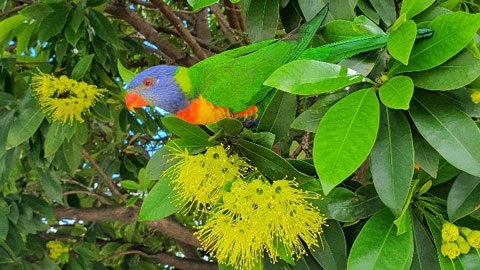Feeding and providing water to wildlife

Feeding wildlife can seem like a harmless way to interact with nature. It may come from a place of kindness but can disrupt natural behaviours, diets, and ecosystems. Wildlife that gets use to human-provided food can lose their instinct to hunt or forage.
The best food for native wildlife is the food they find themselves. Council recommends planting native trees and shrubs as a natural food source. Planting Australian flora supports native animals without the associated risks of feeding them artificial food.
Impacts of feeding wildlife artificial food sources
Feeding wildlife human food can be harmful. Human food deprives animals of the essential nutrients that keep them healthy.
Native animals can become dependent on artificial food sources. This makes them more vulnerable to predators. They can also develop aggressive behaviours that may cause injury to other wildlife.
Feeding wildlife encourages breeding. This can lead to increased populations that the natural environment cannot sustain. They can lose the ability to find and capture their food reducing their chance of survival.
It is illegal to feed dangerous or venomous native animals such as crocodiles and snakes.
How to encourage wildlife into your backyard
You can encourage native animals into your backyard without feeding them by:
- planting native shrubs and trees
- installing a birdbath or small pond
- installing nesting or habitat boxes in native trees
- keeping cats indoors or in enclosures
- minimising light pollution
- avoiding or minimising the use of chemicals in gardens.
Free native plant voucher
Council provides residential property owners with one free native plant voucher per financial year. Community groups and schools can also apply for a voucher. The voucher can be used at community nurseries across Moreton Bay. Learn more or apply for a free native plant voucher.
Providing water to wildlife
All animals need water to survive. Water is not only used for drinking, many animals also use it for bathing, cooling down, and breeding.
You can responsibly provide water by:
- ensuring the water source is shallow with sloping edges to prevent drowning
- cleaning and refilling water sources often to prevent disease and mosquitoes
- creating puddling stations using sand and water for butterflies and insects
- making sure domestic animals cannot access the water.